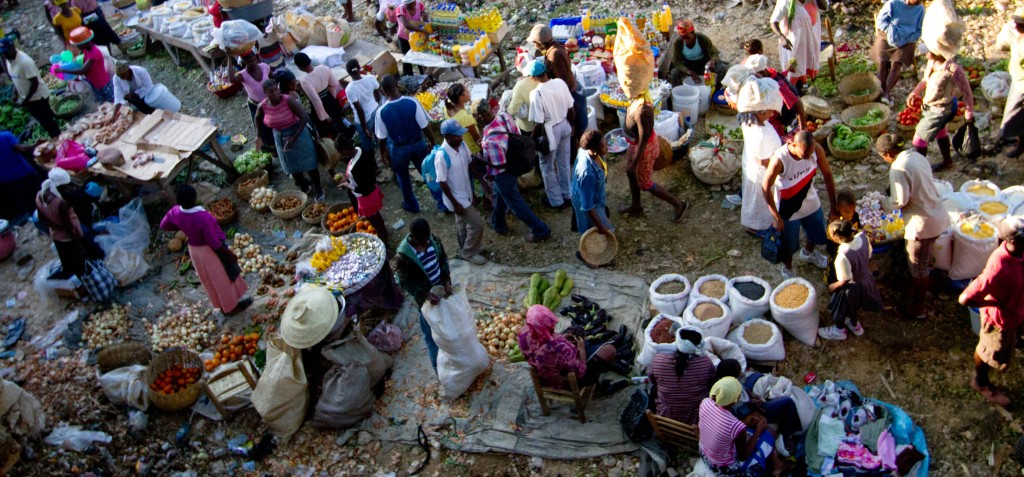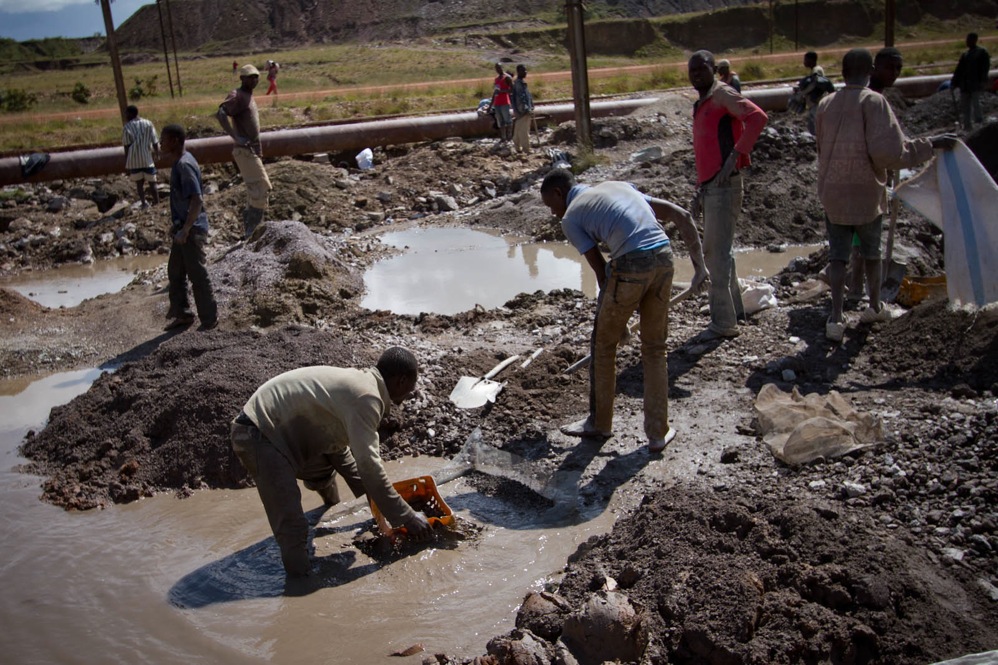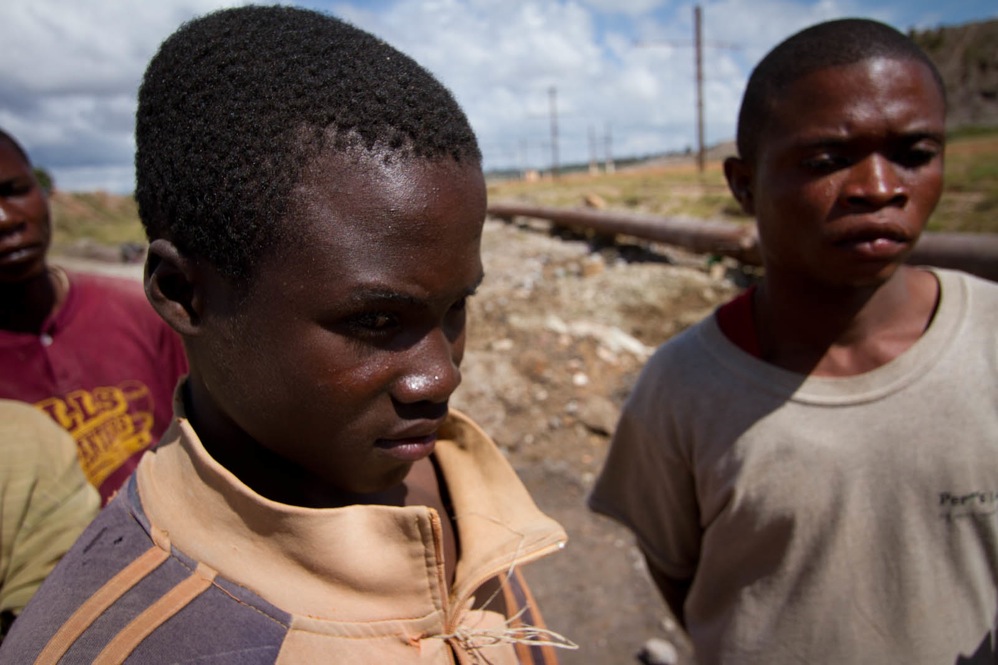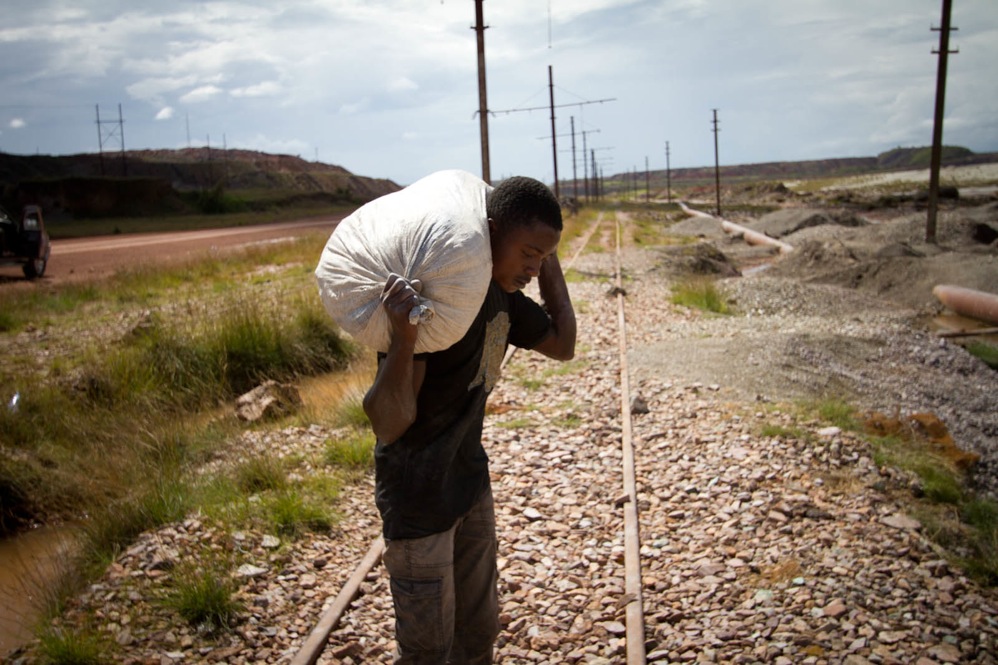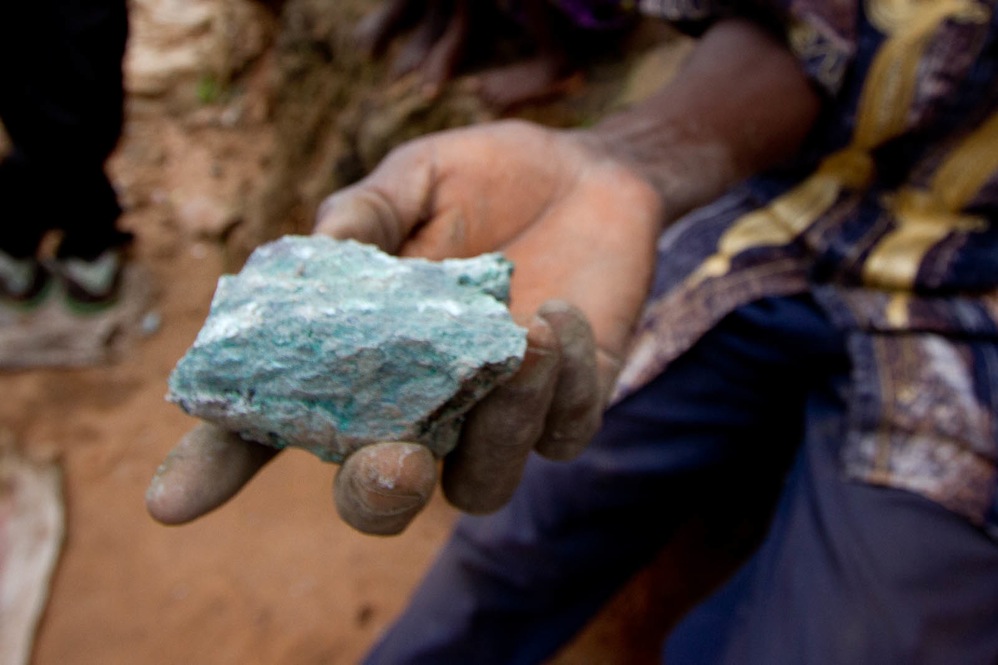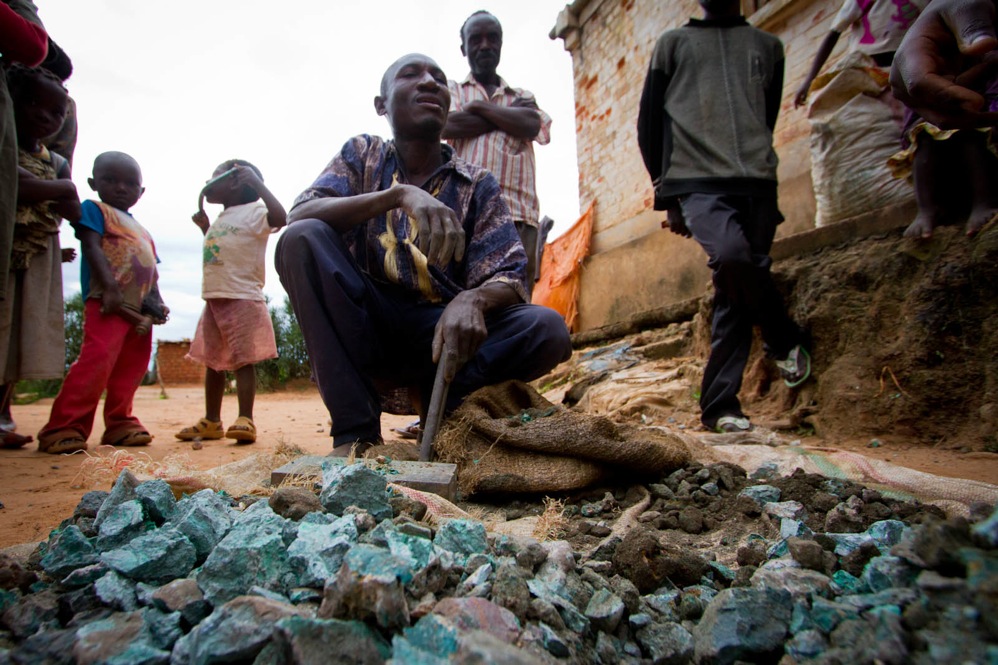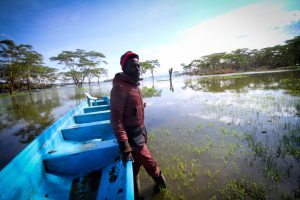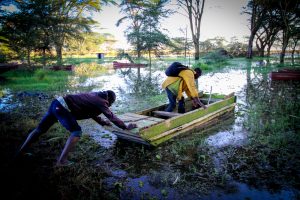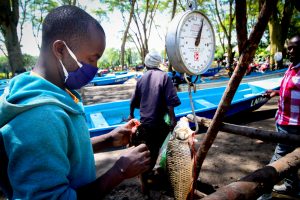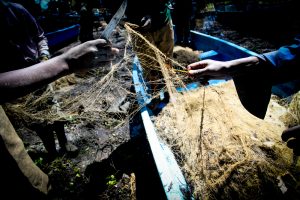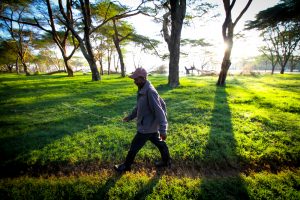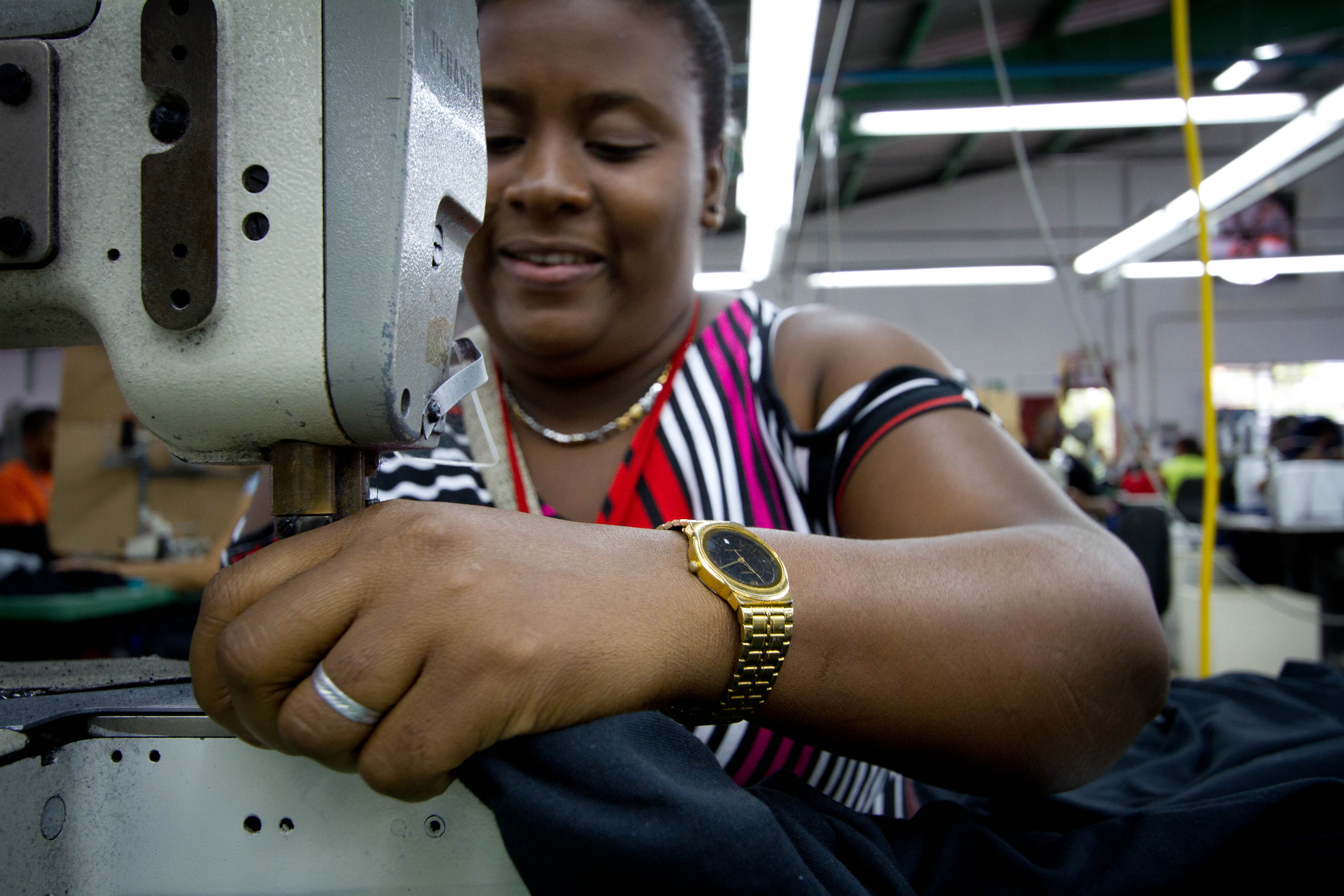Author: Jacob Kushner
PHOTO: Congo’s subsistence miners
uncategorizedFrom the book, China’s Congo Plan
Congo’s subsistence miners dig for their livelihoods
GlobalPost/GroundTruth‘Artisanal’ mining is now the country’s leading profession — attracting adults and children alike. Chinese investment is driving its growth.
KOLWEZI, Congo — Patrick Bwana strains his body as he thrusts a full-sized shovel into a patch of rocky ground. He is 12 years old. He looks 9. He speaks with his eyes fixed on the ground. “I used to go to school, but my father died, and no one paid for my studies anymore,” he says.
Bwana works from around 6 in the morning to about 3 in the afternoon, lugging around bags of rock that seem to weigh as much as he does. He says he can earn $5,000 francs a day doing this. That’s about $5. He hopes he can save enough to pay his own school fees, and return to school.
Bwana is one of tens of thousands of child laborers estimated to work in Congo’s mineral sector. Most take to the work out of necessity, to help their parents earn enough to feed their family. Child labor is illegal in the Congo, as is much of the artisanal mining that takes place in and around Kolwezi on mineral reserves owned or leased by foreign or Congolese companies.
The forces that shape Congo’s artisanal mining sector are many: A worldwide demand for copper and other base minerals for manufacturing; the inability of many Congolese to find any other sort of lucrative work; the absence of government regulation. But ask any Kolwezi miner who’s responsible, and you’re likely to hear just one answer: “The Chinese.”
Read the full story at GlobalPost or NPR, or at the Pulitzer Center on Crisis Reporting, which provided funding for the project.
Income inequality: In Congo, a tale of two cities
GlobalPost/GroundTruthIn Africa’s fastest-growing city, a new haven for Congo’s wealthy burdens some of its poor.
KINSHASA, Congo — On one side of the water, hand-carved wooden canoes navigate the marshy canals of a crowded fishing village. Unpainted cement houses line muddy dirt streets where women sit at stands, selling the day’s catch.
On the other side, where the fishermen used to cast their nets, a posh private city is being raised from the bottom of the Congo River. Pumping millions of cubic meters of sand, the British hedge fund Hawkwood Properties is developing 1600 acres of water to become a tranquil residential haven complete with swimming pools, schools, grocery stores and a sports complex.
A more striking portrayal of income disparity in Congo than Kinshasa’s Cite du Pecheur (Fisherman’s City) and the upcoming La Cite du Fleuve, (City of the River), would be difficult to come by. But Hawkwood’s private development is a logical progression of life in Africa’s fastest-growing city.
See the full story and video at GlobalPost. This story was supported by a grant from the Pulitzer Center on Crisis Reporting.
Trouble at the Lake
National GeographicAt Lake Naivasha, Kenya, floods and the economic fallout from COVID-19 are pitting hungry fishermen against hungry hippos—with deadly results.
Preliminary photography for National Geographic. Feature story: Human-hippo conflicts are exploding in this pristine patch of Kenya.
RADIO: Haiti Three Years After The Earthquake: Still Rebuilding A Life
WLRN South FloridaThe earthquake that struck Haiti three years ago this month sent a concrete wall crashing down onto the 30-year-old dancer Fabienne Jean. Her right leg was crushed and had to be amputated. When Fabienne danced again, she was hailed as a symbol of Haiti’s post-earthquake recovery.
But as reporter Jacob Kushner discovered, the quest to rebuild one woman’s life would take much more than that. Kushner followed Fabienne’s story for nearly a year, reporting from Port-au-Prince, Boston and New York. Listen to the five-part series and see photos by Nick Kozak at wlrn.org.
A Thread of Hope
On Wisconsin MagazineAt a factory in the Dominican Republic, workers are sewing UW apparel, providing for their families, and spreading hope that the global textile industry can change.
During an age in which nearly all clothing sold in the United States is made in developing countries by workers who are paid just pennies an hour, Alta Gracia Apparel is not your typical textile factory: its employees earn three times the nation’s minimum wage of $150 per month. They get health insurance, a pension, vacation days, and maternity leave. They sit in ergonomic chairs and drink water that they themselves have quality-tested for pathogens.
It’s hard to fathom that a decade ago, many of these same people produced hats for a company that paid them just eighty-four cents an hour, forced them to work overtime without extra pay, and sometimes verbally and physically abused them.
See the full article and photos that were published in the Winter 2012 edition of On Wisconsin Magazine.
Election night 2012 live coverage for the Columbia Journalism Review
Columbia Journalism ReviewCJR, in collaboration with Columbia’s Tow Center for digital journalism, covered the Nov. 6, 2012 election coverage. Seven student journalists from Columbia’s Graduate School of Journalism watched and read the coverage, working with CJR editors to report on digital innovation and integration of social media by news outlets as they presented election results. Their analysis ran in real-time on this live blog.
Jacob Kushner covered the cable TV networks and published these seven posts during election night.
Sudan: Clock ticks for Bashir on oil
The Foreign ReportWhy Sudan’s economic problems – not its political ones – may pose the greatest threat to al-Bashir’s regime.
For thirty years almost without pause, governments in Khartoum – the capital of Sudan — have fought against their own people. The North-South civil war, which killed an estimated two million people and displaced four million more, ostensibly ended in 2005 with the signing of the Comprehensive Peace Agreement that allowed for the ethnically diverse South to succeed last year from the Arab-controlled North. But even if that conflict reignites as recent fighting indicates it might, the Sudanese government is now facing a new and even harder-to-combat opponent: its own people in the Northern cities which the government has long counted on for support.
Read the full story as it appeared at the Foreign Report.
USAID contractor Chemonics cited for numerous mistakes in Haiti
GlobalPost/GroundTruthDespite a problematic track record, US continues to award multimillion dollar contracts to the DC firm.
NEW YORK — Two years ago, auditors revealed the Washington, DC, consulting firm Chemonics International and a partner company were employing only one-third as many Haitians as their contract required to clear rubble left by the January 2010 earthquake from city streets as part of the US government-funded “Cash for Work” program.
Read the full story as it appeared at the Global Post.
Haitians Face Persecution Across Dominican Border
NACLAWhen a 7.0-magnitude earthquake struck Port-au-Prince, in January 2010, the Dominican Republic, which shares the island of Hispaniola with Haiti, responded immediately by sending doctors, rescue teams, and over $34 million worth of emergency aid. Since then, the Dominican government has constructed a state-of-the-art university in northern Haiti and worked with Haiti’s new government to improve conditions across the border.
But neither the Dominican state nor the majority of its citizens have shown any such mercy to the estimated 500,000 to 1 million Haitians and Dominicans of Haitian descent living in their midst.
Access the article through NACLA subscription services
Read the accompanying sidebar story, Life in a Border Town Marred by Tension (no subscription necessary).
Haiti’s road to recovery
GlobalPost/GroundTruthLES CAYES, Haiti — For years, the road from here to the coastal city of Jérémie has been paved with good intentions, but never with asphalt.
Well-meaning international organizations and donors built schools in the villages that dot the roadside, purchased goats for children to raise and sell and donated supplies for home repair. But those projects came and went, barely making a dent in the region’s gripping poverty. All the while, the road itself deteriorated into a 62-mile stretch of rocks and mud, making travel difficult and sometimes deadly.
Last week 40 passengers were killed when their bus overturned trying to cross the flooded Riviére Glace — Ice River —that dissects the passage, according to government figures from the incident.
Now, the passage known as National Route 7 is in the middle of a $142 million development project that in many ways is a model of the successful, long-term development Haiti desperately needs.
GlobalPost set out to find what insight this road can offer the myriad of small reconstruction projects underway here and throughout Haiti that are largely failing to bring about lasting change despite billions of dollars in post-earthquake reconstruction aid.
Read the full story as it appeared at the Global Post.
In One Haitian Village, a Gold Rush
UncategorizedLAKWÉV, HAITI — From the small clay yard outside his house made of wooden sticks and mud, Jacques Charles holds a metal bowl filled with water and shows off the sliver of gold resting at the bottom. Then, he reveals the place where he found it—a 12-meter deep tunnel on the side of a hill that he’s been digging with a shovel for 22 days.
“I’ve found bigger ones than this, but you have to have good luck,” he says. “If the spirit doesn’t want you to continue living in misery, he can tell you where it’s buried.”
Read the full post as it appeared at the Pulitzer Center on Crisis Reporting.
The Multiplier Effect: Driving Haiti’s recovery by spending aid dollars locally
GlobalPost/GroundTruthJust a small fraction of foreign aid has gone to Haitian businesses, but an NGO network is trying to change that.
PORT-AU-PRINCE, Haiti — Just days after a cholera epidemic began infecting thousands of Haitians in October 2010, Salim Loxley received a phone call at his desk in Port-au-Prince from the United Nations Development Program (UNDP), one of the largest-spending organizations operating in the post-earthquake nation.
“We need 4.5 million bars of soap by Friday,” said the man on the other end, anxious to distribute the soap to Haitians who were living in unsanitary displacement camps and vulnerable to the highly infectious disease.
Read the full story as it appeared at the Global Post.
Haitian farmers call on US to stop subsidizing its own
GlobalPost/GroundTruthThe 2012 Farm Bill could reverse a decades-long policy of agricultural subsidies that has undercut Haiti’s local rice production
PORT-AU-PRINCE, Haiti — Deep within Haiti’s beautiful Artibonite Valley, a man wades barefoot through loose mud that comes up to his knees. Bending over, he takes individual strands of rice seed from a clump in one hand, stuffing them quickly into the mud one by one.
Were he a hopeful man, Denis Jesu-car, 32, would tell you that four months from now, he’ll be rewarded with a few large sacks of rice that he can then sell in Haiti’s capital, Port-au-Prince, earning him enough to buy food until the next harvest season and send his children to school.
But Jesu-car is no longer hopeful. That’s because this farmer who rents a small plot of land he tends without modern tools or fertilizer is competing with giant American rice companies that produce hundreds of thousands of tons of better quality rice — and ship them to Haiti at artificially low prices.
Read the full story as it appeared at the Global Post.
